|
The hardware PC and peripherical course YBET
|

|
| YBET | PC and periphericals IT course | Hardware Course |
17. Printers technologies.
1. Matrix - 2. Inkjet - 3. Laser - 4. LED printers - 5. Solid jet of ink - 6. Thermals and thermal transfer printer - 7. Laser Win - 8. Postscript
Different tecnologies of printers are used. The choice is mainly function of utilization, quality and cost. The amateur will favor the inkjet for the purchase low price and the print quality, professionals, with numbers of high impressions, the laser for their low cost to the page. The other models are reserved for specific applications.
Comparative table of the different printing technologies.
| Matrix printer | Inkjet printer | Solid inkjet printer | Thermal sublimation printing | Laser printer | |
| Type | impact | jet of bubble of ink on the sheet | Hard heating of ink and projection paper | Transfer on thermal special paper | Heating of powder ink |
| Ink resists water | Yes - not | Not | Yes | Yes | Yes |
| Quality of paper | Of no importance | Quality, not too blotter | Of no importance | Specific paper | Do not import |
| Print quality | Weak | excellent | excellent | - | Excellent |
| Paper listing | Yes | not | not | - | option for specifics models |
| Carbon paper | Yes | - | - | - | - |
| Resolution | - | Means | Means | Raised | Means |
Black impression |
|||||
| Page's price | very cheap | expensive | between inkjet and laser | - | Good |
| Price of the machine | - | cheap | Expensive | - | relatively cheap |
| Speed | - | from 2 to 20 ppm | from 2 to 20 ppm | - | rapid, up to 64 pages/min. |
Color impression |
|||||
| Price in the page | - | Expensive | between inkjet and laser | Very expensive | Weak |
| Type of paper | - | High quality | normal | special | Normal |
17.2. Matrix printer
Matrix printer is the first technology of impression appeared on the market. The principle is to transfer the ink soaked on a ribbon on paper using several pins. The impression is thus done by impact of a needle on a ribbon. This impact printing makes it possible to use carbon paper, used in listing in the multiple impressions (invoices, delivery order...).
The print head takes again 9, 18 or 27 needles distributed each time on 9 needles on the height. More the number of needles is high, better is the impression, but it is also possible to spend several times on the same point. The ribbon sometimes consists of several colors.
Speed is expressed in characters per seconds or lines per seconds.
A matrix printer consists of:
- engine of drive of paper
- an iron bar which is used as guide with the print head.
- the print head which includes the needles and an electronics of control of these needles
- a cable (generally circular) which involves the head of left on the right and screw poured.
The maintenance of a wire-matrix printer is simple : cleaning of the bar using an alcohol zed product, possibly greasing of this one, checking of the cable of side drive of the head and disassembling of the complete head to soak it in a bath based on alcohol. They are the 2 most current repairs.
Generally, all the matrix printers are compatible with the FX80 of Epson (9 needles), possibly IBM ProPrinter.
17.3. Ink Jet Printer.
Marketed since the beginning of the 1990s, these are the best-selling: low purchase price for a good print quality. All current models print in color, although some older low-end models use a single key (three simultaneous color or black ink) cartridge.
Printing sends bubbles of ink heated through nozzles (tubes) on the sheet on which they solidify when cooled. If the paper is too absorbent, it absorbs the ink that spreads before drying. The principle dates from the years 70 when a researcher from CANON mit contact a soldering iron warm with a syringe filled with ink: a bubble formed, drawing out the ink from the syringe.
The operation of the inkjet is identical to this accidental discovery: a pulsed signal (electrical) in the print head produces every second thousands of rise in temperature (between 300 and 400 ° C). Each creates a tiny bubble that exerts a pressure that is eject a single drop extremely fine. When the pressure drops (decrease of the temperature), the void is filled by a new drop and so on.
The print head is composed of several rows of tubes extremely thin, barely visible to the eye. Each nozzle is connected to a heating element with its own electronic control circuit that can accommodate thousands of pulses per second. On the other side, each nozzle is connected to the ink tank.
The leading manufacturers of inkjet printers are Hewlett-Packard, Canon, Lexmark and Epson. Others like Olivetti, Brother,... complete the market. This training need contain only the maintenance and operation of the first marks, the principle of others is identical.
Technological advances are mainly for the printing of photography: a gradient of colors perfect using only three basic colors, and not mixed together as for silver pictures.
17.3.1. Hewlett Packard.
HP left the first inkjet. With the departure black and white, they evolved to the color. Since 1998, they use mode RET II for the photo impression which consists in inserting to 16 drops of ink in the same point. The RET III lays out about it to 36 drops in the same pixel. In the case of RET III, the print heads color use 408 injectors (136 by colors) and 300 injectors for the black. The frequency of "shooting" is of 18.000 jets a second maximum. This explains why the printers HP remain in 600 dpi maximum.
Left in August 2002, technology RET IV is a hybrid technology of certain models HP. This technology is accessible by replacing the black cartridge by a cartridge 3 colors (the cartridge basic color remains in function). The size of the drops passes to 4 to 5 picolitres. The number of tubes passes from 3 X 136 (RET III) to 6 X 100, is 3500 to 1,2 million colors by points
The toner includes the ink and the electronics of control of the impression. In the event of problems of impression, start by using the cleaning program of the heads.
For maintenance on a inkjet Hewlett Packard, position the head in position replacement of cartridge (except on some old models), open the cap. Remove the electrical connector. This will make it possible to move the print head to the hand. Indeed, the head is maintained in its part of waiting when you extinguish the printer. Then:
- clean the bar of displacement of the heads with an alcoholic rag without water nor produced. This bar is self-lubricating.
- clean the plastic of alignment of the head to water.
- clean the contacts cartouche - dry print head .
-
to clean the system of impression of the cartridges. Either with water (to clean only part 2), or more radical, but this consumes ink: to clean 1 and 2 with a product alcoolized on a rag).

- clean possibly the transport part of paper: impression without paper from where souillage of the following sheets by ink.
- clean with alcohol the support of the cartridges of impression (removed ink). This removes the stains.
In last spring, you can straightforwardly change the cartridge.
The drivers are provided with the machine for Windows. In back, use the driver deskjet. Sometimes, it will be necessary to use the drivers laserjet II, in particular for the program of accountancy DOS Cubic.
17.3.2. Epson
The method of impression of the printers jet of Epson ink is different from that of HP. The cartridge comprises only ink. Epson assembles of resolution since the maximum resolution is of 5760 dpi (on special paper). Nevertheless, each point receives only one drop of ink. The transitions are more moderate with this rise of resolution obliges nevertheless to use adapted paper, therefore expensive, to obtain a maximum quality. Epson does not use the same technique as the others since the injection of ink is done by an electromechanical process named PIEZO. The ejection of ink is not done by heating, but by an electric discharge
 In the event of problems of impression, you can use the key of cleaning of the
heads. A maintenance only consists in cleaning the horizontal bar of
displacement of the heads. If you always have problems of impression, you must
straightforwardly dismount the print head and soak it in a
Methanol bath (not the ethanol, it tackles the
plastic). Let soak it minimum 10 hours and try again. Unfortunately, that does
not go to all the blows (not to say not often). Not to use a jet of Epson ink
several months generally causes the pure and simple replacement printer.
In the event of problems of impression, you can use the key of cleaning of the
heads. A maintenance only consists in cleaning the horizontal bar of
displacement of the heads. If you always have problems of impression, you must
straightforwardly dismount the print head and soak it in a
Methanol bath (not the ethanol, it tackles the
plastic). Let soak it minimum 10 hours and try again. Unfortunately, that does
not go to all the blows (not to say not often). Not to use a jet of Epson ink
several months generally causes the pure and simple replacement printer.
Under Windows, use the drivers provided with the printer. Under Back, the jet of Epson inks are in majority compatible with needles FX80. The impression is of type switches in this case.
| It is the deformation of certain bodies by the electricity which uses piezoelectric Cristaux technology |  |
|
Operation of the Epson inkjet. |
|
| One finds in the tube a flexible membrane (in red). The pulse is transmitted to the crystals which are in the body of the print head (in blue) |  |
| With the reception of the pulse, the crystals make react the membrane (in red) which becomes deformed. |  |
| When the impulse ceases, the membrane returns to its initial position. This compresses the ink which releases the bubble |  |
17.3.3. Inkjet Canon.
Canon used toners alone. Currently, the cartridges take again electronics, just like HP. The ejection of ink is also done by heating of ink. The talks are identical to HP.
Few possibilities of using these printers in DOS without the specific driver.
| It is the reaction of the liquid to the heat which defines Jet technology of ink | |
|
The Operation of the inkjet Canon |
|
| A pulse is transmitted to a resistance located in the body of the tube of impression | |
| Resistance produces heat which creates a gas bubble | |
| The bubble of ink dilates under heat and finally this bubble is projected towards outside | |
| Once the ejected bubble, the tube is ready to receive a new pulse | |
17.4. Laser printers.
The printers laser use the same principle of operation as the photocopiers, an ink deposited on paper is cooked. The drum (drum) is the component main thing. It acts of a cylinder of glass coated with a special layer, in general made up of silicon. Paper passes initially on a cylinder of ionization (ionisor). This will make it possible to stick the temporary ink of manner on paper at the time of the passage under the drum. The image is transferred on the drum (drum) by laser beam (1). The laser beam consists of only one source, the beam is transferred on the drum using an ice which directs the beam on the whole length of Drum. Ink in the form of powder (toner) is fixed only at the site of the drawing on the drum (2). The drum turns to fact in the direction of the needles of a watch involving paper at the same time. Ink is thus transferred on paper. With the passage above coronary (3) (wire traversed by an electrical current), ink is fixed definitively by heating. In the laser case of the printers color, the drum is generally single, but the laser beam and the toner are divided into 4 times around the drum: 1 per basic color + black. This explains the size of the laser color.

The maintenance of a laser printer consists in cleaning the various parts soiled by ink. This is generally done with a specific vacuum cleaner, used for the photocopiers. Do not use to in no case a domestic vacuum cleaner. Some tooner of recycling tend to flee. The cleaning of coronary (wire) must be done with precaution using a small brush.
Majority, laser printers are compatibles Laserjet III. This allows, under Windows or DOS to install printers (only in parallel ports, DOS do not recognize USB). Since, the drivers are laserjet IV and laser V, but remain compatible Laserjet III and even Laserjet II. Laserjet IV includes a bi-directional communication.
The printers laser color use the same principle but with 4 distinct blocks, 1 black and 3 colors.
17.5. The laser with LED
Quality is practically the same one as the laser for a price less expensive. The principle of operation of these laser with LED is practically identical, only the laser beam is replaced by a whole of LED (1) which acts on the whole of the drum. Other side of the coin, the lifespan of a printer with LED is limited to a maximum number of copy. On the level quality of impression, a printer LED is equivalent to a LASER printer.
17.6. Solid ink-jet printer.
 This
technology is developed by Tektronix. 4 inks (cyan, magenta, yellow and black)
are presented initially in the form of wax sticks. When the printer is under
operation, the print head keeps a constant temperature, which makes it possible
to maintain ink in the liquid state in a tank compartmentalized beside the head.
The image is transferred on a drum, principle equivalent to that of the lasers.
The print heads are thus not directly in contact with the sheet of paper.
This
technology is developed by Tektronix. 4 inks (cyan, magenta, yellow and black)
are presented initially in the form of wax sticks. When the printer is under
operation, the print head keeps a constant temperature, which makes it possible
to maintain ink in the liquid state in a tank compartmentalized beside the head.
The image is transferred on a drum, principle equivalent to that of the lasers.
The print heads are thus not directly in contact with the sheet of paper.
The technology have first repurchased by Xerox. This technology is used only for some specific models.
17.7. Thermal printer, sublimation and with thermal transfer.
These thermal printers are used only in photograph of high range, in particular in publicity. A thermal printer uses a special paper sensitive to heat. Paper is faded according to the heat provided by the needles of the head.
In the case of the printers with thermal transfer, paper is normal. One or more lines of metal needles heats a ribbon of dry ink placed between the head and paper following the desired images.
The sublimation printers use a roll-fed paper. Technology is similar with that of the thermal printers. The resolution is limited to 300 dpi, but, even with the magnifying glass, the grains do not appear. This solution thus offers one made similar to the silver photograph. Contrary to the thermal photographs (the photographs bleach with the light), technology used (D2T2, Thermal Dye Diffusion Transfer) allows durable images in time.
With technology Thermal Dye Diffusion Transfer (thermal sublimation), the thermal print head heats three heads and was covered with gas in yellow, magenta and cyan. The thermal process makes it possible to transform the dyeing into gas which is diffused in the shape of a thin receiving layer on paper. A protective coating is placed above paper to protect the color against water and the ultraviolet rays and to prevent the loss of colors.
17.8. WinLaser
The printers laser of the Winlaser type are less expensive but do not include internal storage. The generic driver is directly provided by Microsoft. The processor sends the data to the printer ready with the impression. These printers difficult to parameterize, with some problems of compatibility with certain Windows software and do not function under DOS. They must be detected at the time of the starting of the PC. Using the memory and the resources processor of the PC, they are generally slower. In the same way, certain printers jet of ink function in DOS only in one Windows window.
17.9. Postcript Printer
The Postscript language is a format of file making it possible to transfer from information and to print them directly (in theory). It is delivered in option on certain printers laser. A printer postscript represents the various points, not like images, but by a vectorial representation. The Postscript printers are used mainly by Mac.
17.10. Airprint
Airprint is a technology from Apple that is not using a driver but printer who must be compatible with a specific format. This technology use wifi.
In relation:
- Microprocessor PC Microprocessors used in PC computers
- Course: colors parameters Resolution, sizes...
- An IT dictionary Technical definitions for PC, software, network, ...
- Base of electronics and electricity Concept of electricity and digital electronics for computing technicians
|
Next of hardware 1 course > 18. Scanner, cameras numerical |
The hardware course 2: networks, servers and communications
Competences with the service of quality.